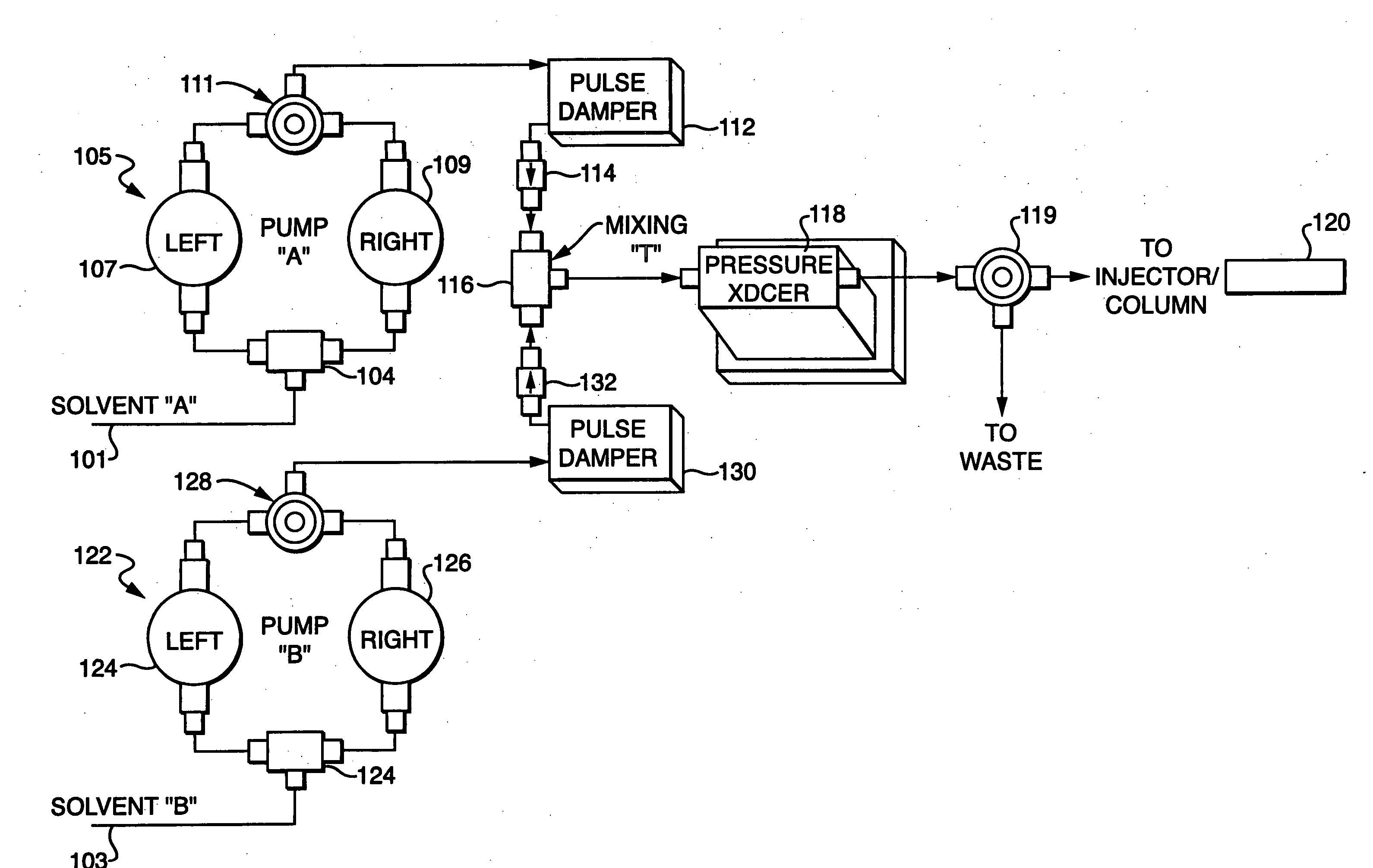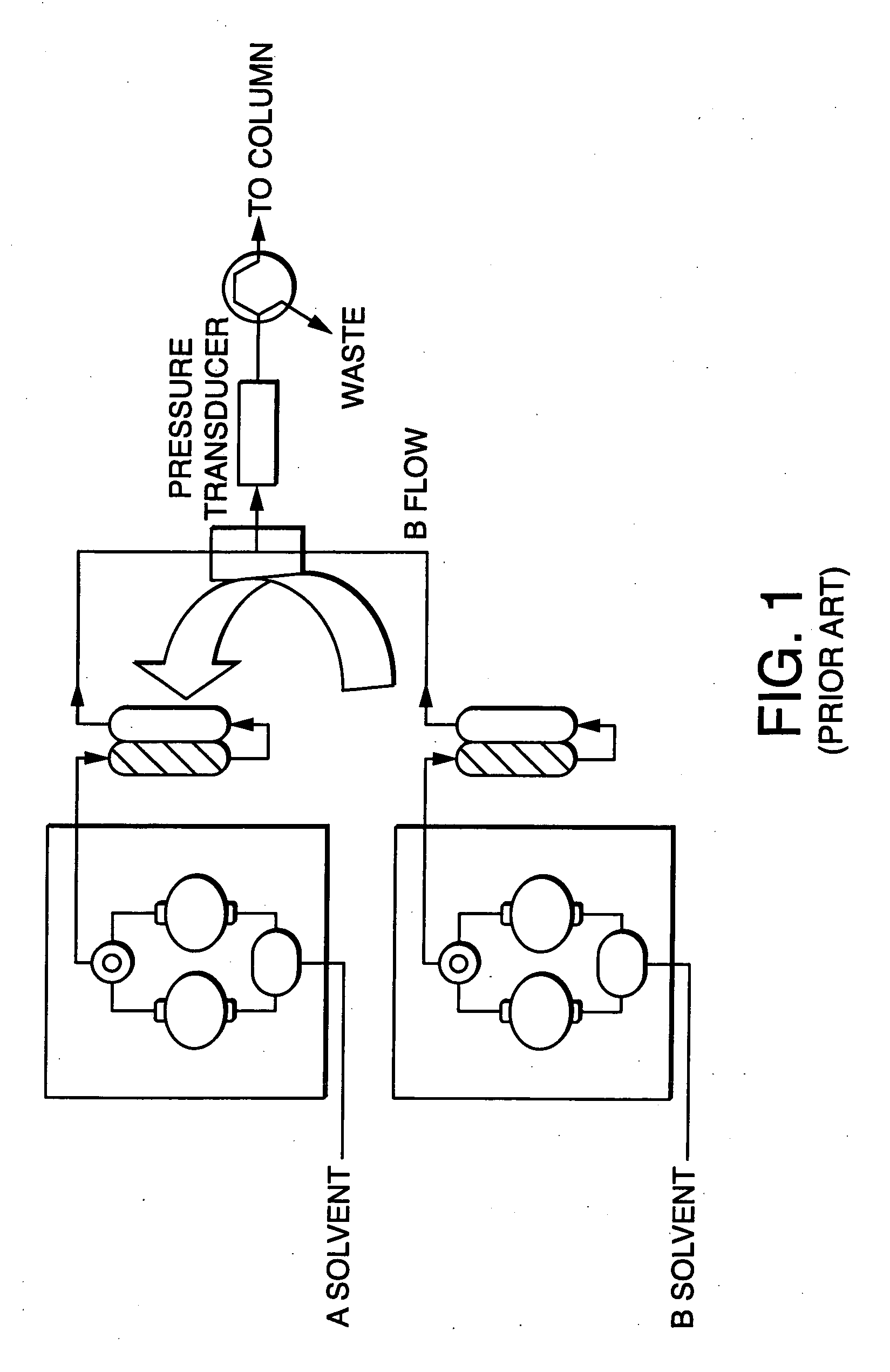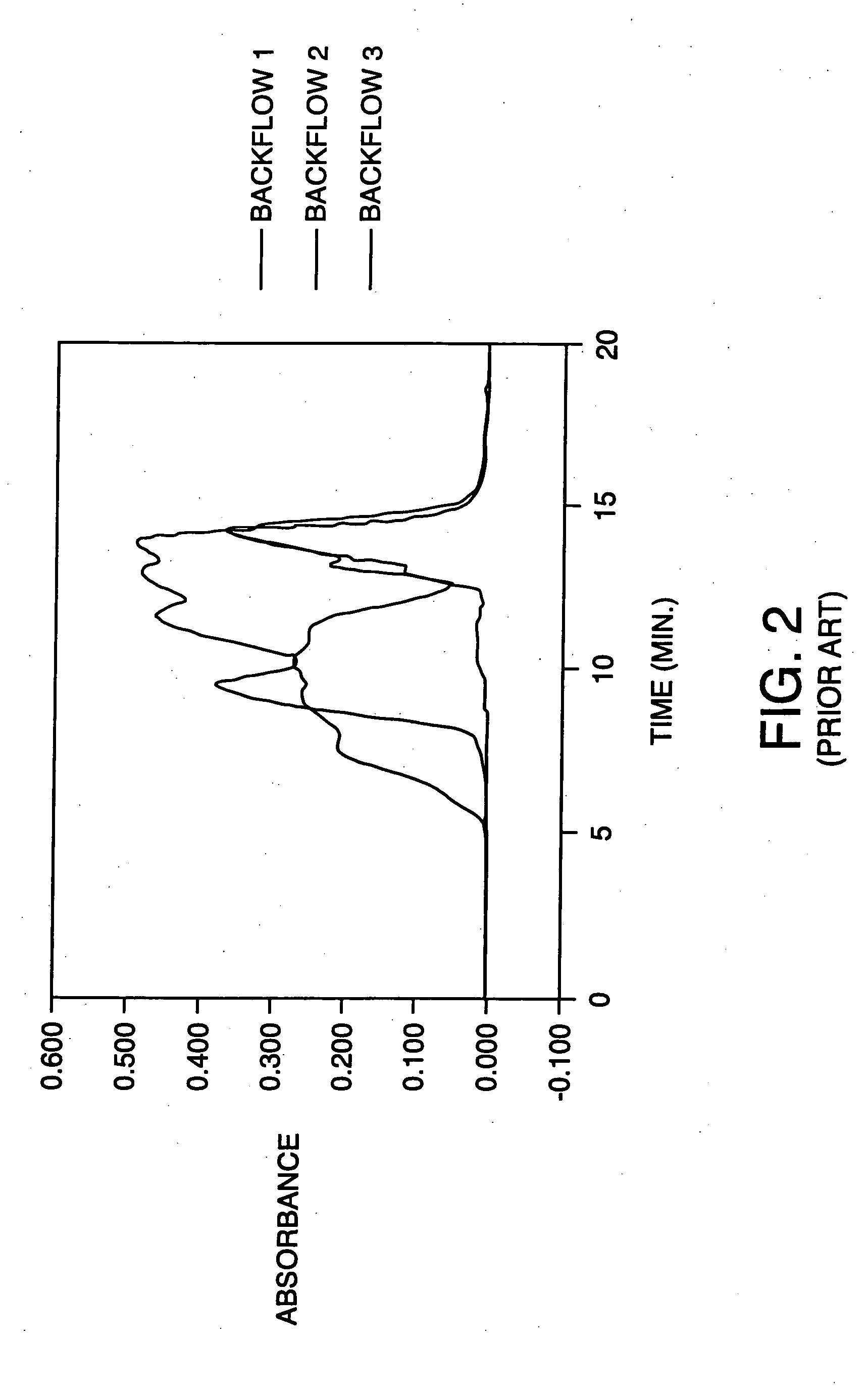Backflow prevention for high pressure gradient systems
a high-pressure gradient, backflow prevention technology, applied in the direction of settling tank feed/discharge, machine/engine, chemical/physical processes, etc., can solve the problems of reducing the reproducibility of run-to-run, reducing the ideal pump characteristics of known pumping systems, and reducing the fluidic crosstalk. , to achieve the effect of optimizing the performance of in-line pulse dampers, reducing fluid crosstalk, and reducing fluidic crosstalk
- Summary
- Abstract
- Description
- Claims
- Application Information
AI Technical Summary
Benefits of technology
Problems solved by technology
Method used
Image
Examples
Embodiment Construction
The present disclosure will be described in detail with respect to chromatographic applications with the understanding that embodiments of the present invention are directed to industrial and process control applications as well.
As shown in FIG. 4 the effect of pump crossover on solvent composition is illustrated. Within this illustration, the total flow is 1 mL / min. A first pump delivers ninety percent of the flow or approximately 900 μL / min. A second pump delivers ten percent of the flow or approximately 100 μL / min. The stroke volume is approximately 100 μL for both pumps. There are nine crossovers of the first pump to one crossover of the second pump to provide the desired composition. When the first pump crosses over there is a deficit in the first solvent of about 23 percent in flow rate and the composition is momentarily enriched in the second solvent. This deficit is illustrated by a first curve 301. A second curve 302 shows the effect of reducing the magnitude of the flow...
PUM
| Property | Measurement | Unit |
|---|---|---|
| Pressure | aaaaa | aaaaa |
| Pressure | aaaaa | aaaaa |
| Pressure | aaaaa | aaaaa |
Abstract
Description
Claims
Application Information
 Login to View More
Login to View More - R&D
- Intellectual Property
- Life Sciences
- Materials
- Tech Scout
- Unparalleled Data Quality
- Higher Quality Content
- 60% Fewer Hallucinations
Browse by: Latest US Patents, China's latest patents, Technical Efficacy Thesaurus, Application Domain, Technology Topic, Popular Technical Reports.
© 2025 PatSnap. All rights reserved.Legal|Privacy policy|Modern Slavery Act Transparency Statement|Sitemap|About US| Contact US: help@patsnap.com



